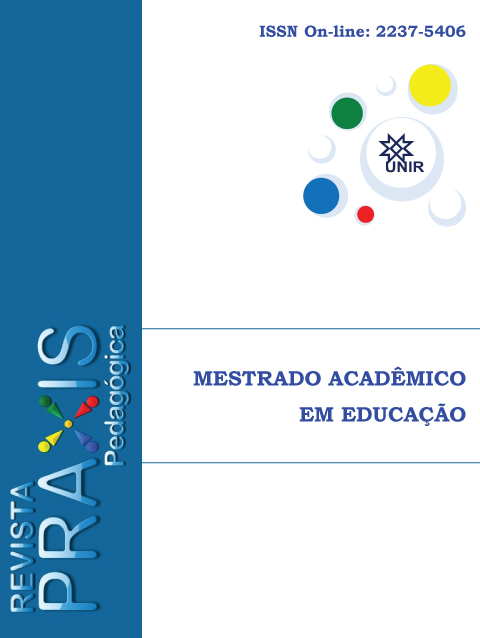EDUCATIONAL INTEGRATION AT THE BRAZIL/BOLIVIA BORDER – A REFLECTION ABOUT THE INSERTION OF BOLIVIANS STUDENTS IN BRAZILIANS SCHOOLS
DOI:
https://doi.org/10.69568/2237-5406.2018v1n4e3855Keywords:
Education, Integration, Language, Border.Abstract
The present paper has as proposal to make a critical reflection about the integration actions developed in the area of education between the Mercosul states parties, in particular, on the border between the Brazil and Bolivia, at the Municipality of Guajará-Mirim with the twin city of Guayaramerín, Bolivian side. Through legal mechanisms, the countries bordering the Brazil seek to maintain a relationship on reciprocity in various sectors, among them, the educative, since understand that to invest in education strengthens the region. However, to this work, the linguistic factor is paramount to understand what the border with their pluralities is. It is not only Brazilians and Bolivians, since within the group of Brazilians we also found a cultural diversity from the north to the south of the country. The same happens with Bolivia, so much that the nominal identification of the country already emphasizes this heterogeneous character: Plurinational State of Bolivia. Thereby to the development and cultural respect of this region, it would be expected to have an integration that guarantee a guajaramirenses and guayaramirenses an inclusive education and of quality to supply the wishes of the peoples living on this border (Brazil/Bolivia).
Downloads
References
BRASIL. Subchefia para Assuntos Jurídicos. Decreto Nº 2.689, de 28 de julho de 1998 - Protocolo de Integração Educacional Disponível em: <http://www.planalto.gov.br/ccivil_03/decreto/ D2689.htm>. Acesso em: 20 jan. 2018.
CANCLINI, Néstor García. Culturas Híbridas. Estratégias para Entrar e Sair da Modernidade. Tradução Heloisa Pezza Cintrãoet tal. 4ª Edição. 1ª reimpressão. São Paulo: Editora da Universidade de São Paulo, 2006.
______. Latino-americanos à procura de um lugar neste século. Tradução Sérgio Molina. São Paulo: Iluminuras, 2008.
FREIRE, Paulo. Pedagogia da Autonomia. Saberes necessários à prática educativa. 31 ed. São Paulo: Paz e Terra, 1996.
GAGLIETTI, Mauro; BARBOSA, Márcia H.S. A Questão da Hibridação Cultural em
JACOB, L.Mey. Etnia, identidade e língua. In: SIGNORINI, I. (Org.) Língua(gem) e identidade: elementos para uma discussão no campo aplicado. Campinas: Mercado das Letras, 1998, p. 69-88.
KLEIMAN, A. B. A construção de identidades em sala de aula: um enfoque interacional. In: SIGNORINI, I. (Org.) Língua(gem) e identidade: elementos para uma discussão no campo aplicado. Campinas: Mercado das Letras, 1998, p. 267-302.
LANDOWSKI, Eric. Presenças do Outro. Ensaios de Sociossemiótica. São Paulo: Editora Perspectiva. S.A., 2002.
MARTÍN-BARBERO, Jesús. Dos Meios às Mediações: Comunicação, Cultura e Hegemonia. Rio de Janeiro: Editora UFRJ, 2015.
MERCOSUL. O MERCOSUL. Disponível em:
<http://www.mercosul.gov.br/saiba-mais-sobre-o-mercosul#OMERCOSUL> Acesso em: 26 jan. 2018.
MERCOSUR. Instrumentos Fundacionais do Mercosul. Secretaría del MERCOSUR – Sector de Normativa, Documentación y Divulgación. Montevideo, 2007.
MOITA LOPES, L. P. Discursos de identidade em sala de aula de leitura de L1: a construção da diferença. In: SIGNORINI, I. (Org.) Língua(gem) e identidade: elementos para uma discussão no campo aplicado. Campinas: Mercado das Letras, 1998, p. 303-330.
ORLANDI, E. P. Identidade linguística escolar. In: SIGNORINI, I. (Org.) Língua(gem) e identidade: elementos para uma discussão no campo aplicado. Campinas: Mercado das Letras, 1998, p. 203-212.
RAJAGOPALAN, K. O conceito de identidade em linguística: é chegada a hora para uma reconsideração radical? In: SIGNORINI, I. (Org.) Língua(gem) e identidade: elementos para uma discussão no campo aplicado. Campinas: Mercado das Letras, 1998, p. 21-45.
REVUZ, Christine. A língua estrangeira entre o desejo de um outro lugar e o risco do exílio. In: SIGNORINI, I. (Org.) Língua(gem) e identidade: elementos para uma discussão no campo aplicado. Campinas: Mercado das Letras, 1998,
p. 213-212.
SAUSSURE, Ferdinand de. Curso de linguística Geral. 27 ed. Organizado e editado por Charles Bally e Albert Sechehaye. Tradução de Antônio Chelini, José Paulo Paes e Izidoro Blikstein. São Paulo: Cultrix, 2006.
VIEIRA, Jefferson de Castro. As experiências de integração da ALALC e ALADI. Revista de estudos e pesquisas sobre as Américas. V.9 N.1, 2015.
Downloads
Published
How to Cite
Issue
Section
License
Ao submeter um artigo à Revista Praxis Pedagógica e tê-lo aprovado, os autores concordam em ceder, sem remuneração, todos os direitos de primeira publicação e a permissão para que Praxis Pedagógica redistribua esse artigo e seus metadados aos serviços de indexação e referência que seus editores julguem apropriados.



